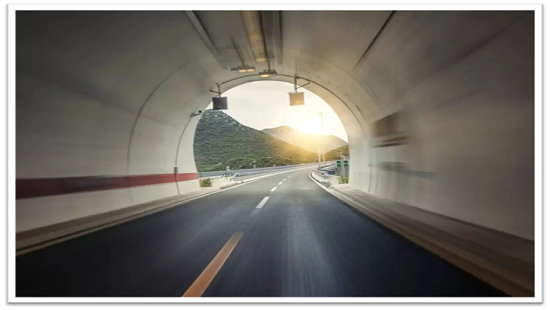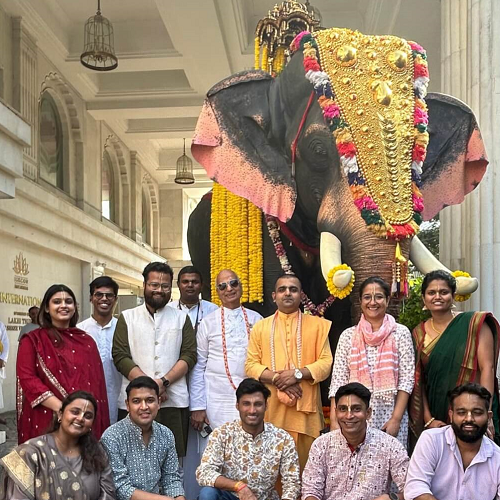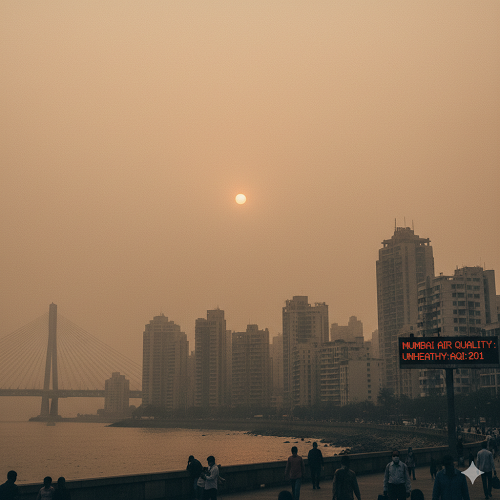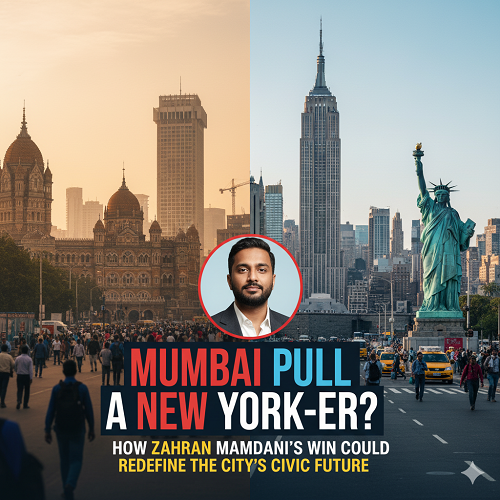
Good News for Mumbaikars, MMRDAŌĆÖs 70-Km Integrated Tunnel Network Set to Transform City Traffic, DPR Work Underway
Mumbai’s traffic story has long been one of daily endurance, a negotiation between chaos and necessity. But now, the city may finally be on the verge of rewriting it. In a major infrastructure push, the Mumbai Metropolitan Region Development Authority (MMRDA) has announced significant progress on its ambitious 70-kilometre Integrated Tunnel Road Network project, aimed at decongesting roads and connecting key transport corridors underground. The agency confirmed that the Detailed Project Report (DPR) is currently being prepared, with tenders already invited to appoint consultants for the blueprint.
The project, envisioned as a modern subterranean artery for Mumbai, promises to link the city’s major road, rail, and air hubs, including the Mumbai Coastal Road, the Bandra-Kurla Complex (BKC) Bullet Train Terminal, and Chhatrapati Shivaji Maharaj International Airport’s Terminal 2 (T2). Once completed, the network could dramatically alter the way Mumbaikars move across the city, providing faster, safer, and more reliable transport across critical zones that are currently bottlenecked by surface congestion.
A Vision Below the Surface: What the Project Envisions
According to MMRDA, the Integrated Tunnel Network aims to weave together Mumbai’s fragmented transport ecosystem into a single, seamless system. The 70-kilometre underground corridor will connect the Mumbai Coastal Road, BKC Bullet Train Terminal, and CSMT Terminal 2, while also laying the foundation for future extensions to the Eastern Express Highway, Western Express Highway, and emerging north-south transit routes.
The overarching goal is not just to reduce traffic congestion but to create a multi-modal transport backbone that integrates road, rail, and air connectivity. In practical terms, the project will reduce surface traffic load, enhance travel efficiency, and support commercial growth around key nodes. It will also strengthen Mumbai’s resilience to monsoon flooding by diverting vehicular movement underground and reducing strain on surface infrastructure.
Three Phases, One Ambitious Blueprint
As per initial plans, the tunnel network will be developed in three strategic phases, each serving a distinct mobility purpose.
In the first phase, a 16-kilometre section will connect Marine Drive-Worli to BKC and the Chhatrapati Shivaji Maharaj International Airport (T2). This corridor will also integrate with the upcoming Mumbai-Ahmedabad Bullet Train Station, ensuring a direct, uninterrupted commute between the city’s commercial heart and its new high-speed rail hub.
The second phase envisions a 10-kilometre east-west tunnel linking the Eastern Express Highway with the Western Express Highway, creating a much-needed crosstown connection that bypasses surface congestion in Dadar, Sion, and Bandra.
Finally, the third phase will feature a 44-kilometre north-south corridor, running underground through Mumbai’s urban spine. This phase is designed to connect major commercial and residential clusters, offering faster, congestion-free travel across long distances within the metropolitan region.
Engineering Mumbai’s Future: Technical and Environmental Dimensions
The Integrated Tunnel Network project represents a bold shift in how Mumbai approaches urban mobility. Unlike elevated roads that consume skyline space and disrupt neighbourhoods, underground infrastructure allows for long-term capacity building with minimal surface disruption.
Experts estimate that Mumbai loses nearly Ōé╣1.5 lakh crore annually due to productivity loss, fuel wastage, and environmental degradation caused by traffic congestion. A well-designed tunnel system could offset a significant portion of these losses by cutting commute times by up to 50%. Furthermore, it will reduce vehicular emissions, lower ambient noise levels, and improve the city’s air quality index, a goal increasingly critical for Mumbai’s sustainability agenda.
While tunnel engineering poses challenges related to soil stability, coastal proximity, and monsoon resilience, MMRDA’s phased approach ensures that these risks are mitigated through rigorous feasibility studies and modern construction technologies. The DPR, once finalized, is expected to outline precise alignments, environmental safeguards, and cost estimates.
Integration Beyond Roads: The Metro Merger Initiative
In a parallel development, the Maharashtra government has initiated steps to merge multiple metro rail agencies operating across the Mumbai Metropolitan Region (MMR). Currently, several bodies including the MMRDA, Mumbai Metro Rail Corporation Limited (MMRCL), and the Mumbai Metropolitan Region Transport Authority (MMRTA) manage different metro lines, often leading to overlapping responsibilities and coordination delays.
The state’s newly constituted high-level committee is tasked with recommending measures to unify these entities into a single administrative structure. This integration is expected to streamline decision-making, reduce bureaucratic friction, and improve the overall commuter experience.
According to the government resolution, the merger aims to create a unified transport framework that synchronizes metro expansion, tunnel development, and surface connectivity under one strategic umbrella. If executed effectively, it could mark a turning point in how Mumbai manages its transport infrastructure, not as isolated projects, but as interdependent systems driving collective mobility.
Economic and Strategic Significance
The Integrated Tunnel Network will do more than ease traffic; it will recalibrate Mumbai’s economic geography. By connecting commercial nodes such as Marine Drive, BKC, and the airport, the project will enhance real estate value, reduce logistics delays, and attract corporate investments seeking reliable connectivity.
According to a 2024 urban planning assessment, every kilometer of improved mobility infrastructure can boost regional GDP by 1–1.5% over a decade through time savings, logistics efficiency, and expanded business opportunities. The tunnel project, therefore, is not merely a transportation upgrade, but a long-term economic multiplier that positions Mumbai among Asia’s most advanced megacities.
Challenges Ahead: Cost, Coordination, and Execution
While enthusiasm runs high, execution remains key. Large-scale underground projects demand precision, accountability, and fiscal discipline. Land acquisition, coordination between municipal and state agencies, and adherence to environmental regulations will determine the project’s pace and credibility.
Previous megaprojects like the Coastal Road faced delays due to environmental litigation and technical hurdles, underscoring the need for proactive planning and transparent communication. For the MMRDA, the success of this tunnel network will depend on how effectively it can balance ambition with adaptability, ensuring timelines are realistic and citizen impact is minimized.
Conclusion: A City Beneath the City
The 70-kilometre Integrated Tunnel Network symbolizes Mumbai’s evolution from reactive urban growth to proactive infrastructure planning. If the DPR transitions smoothly into implementation, the city could witness a paradigm shift in its mobility, economy, and liveability within the next decade.
For millions of Mumbaikars weary of gridlocked commutes, the prospect of driving through a high-speed underground corridor from Marine Drive to BKC or the airport is not just an engineering dream, it’s a vision of possibility. The tunnel project reaffirms a simple truth, that the future of Mumbai’s progress may not lie above the ground, but beneath it.




